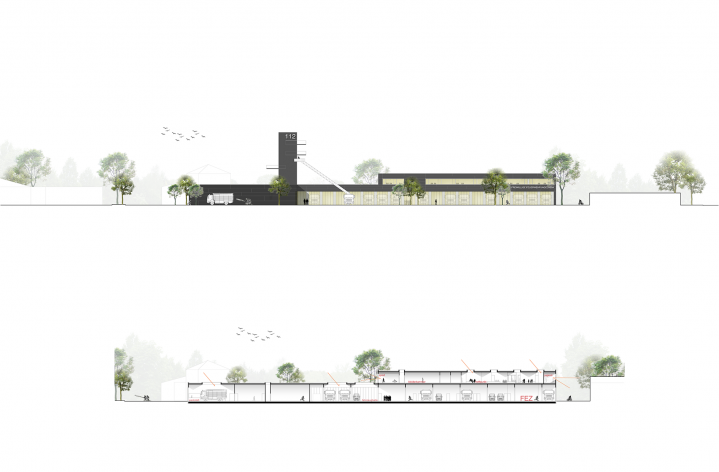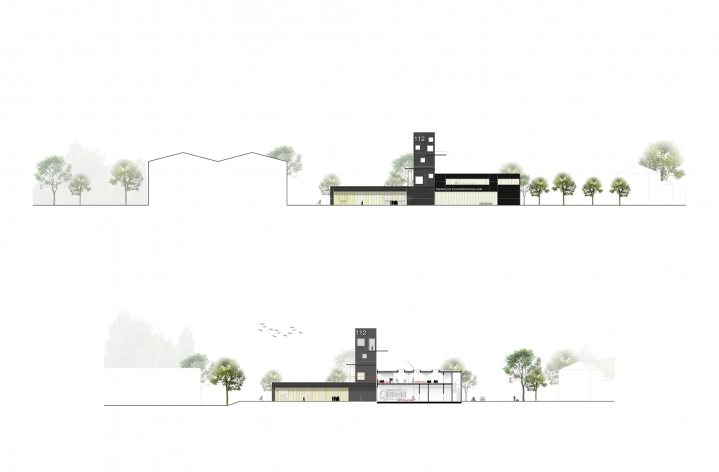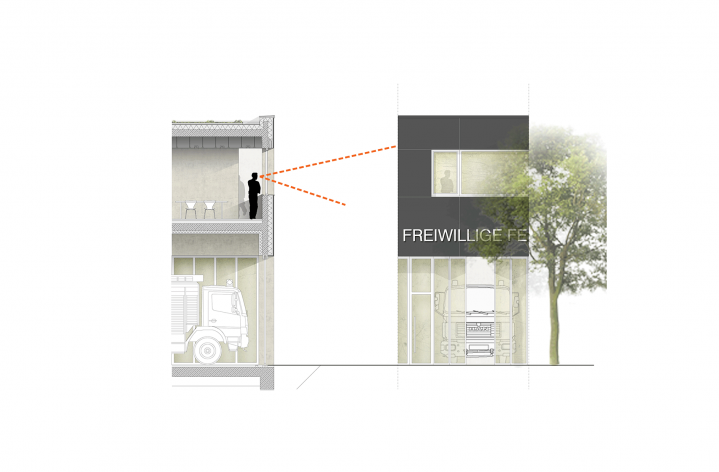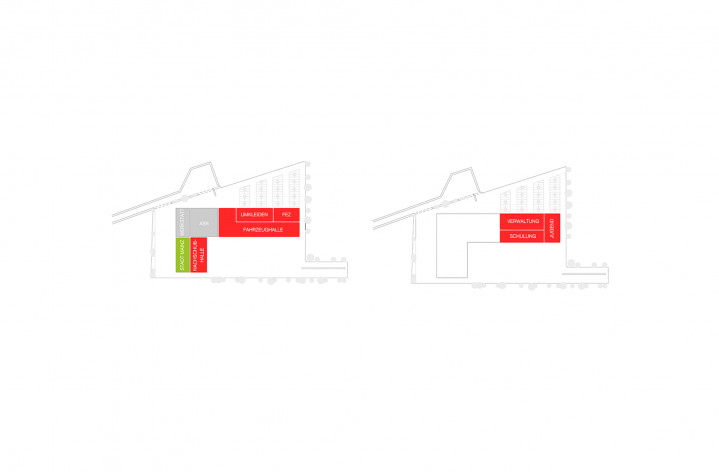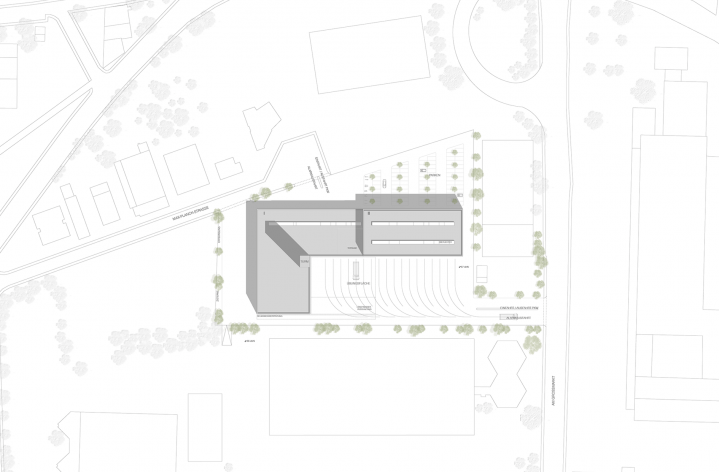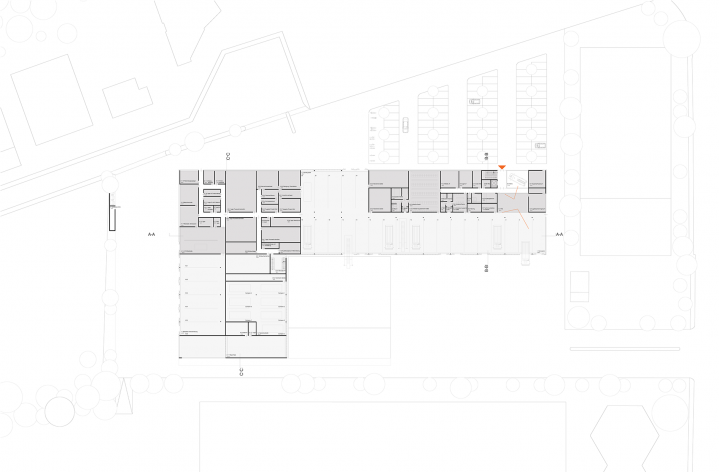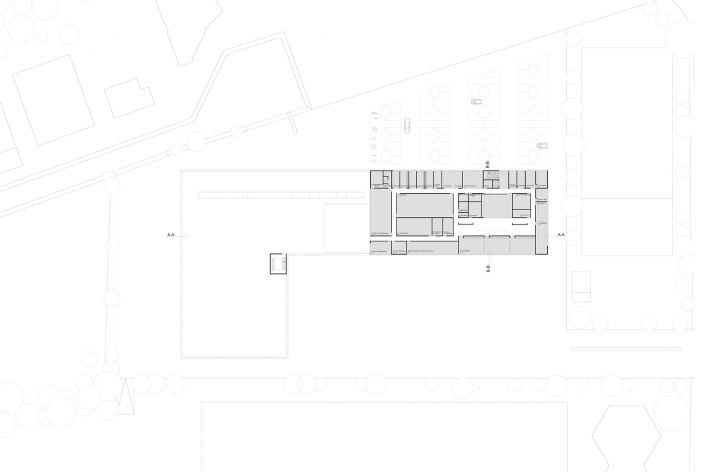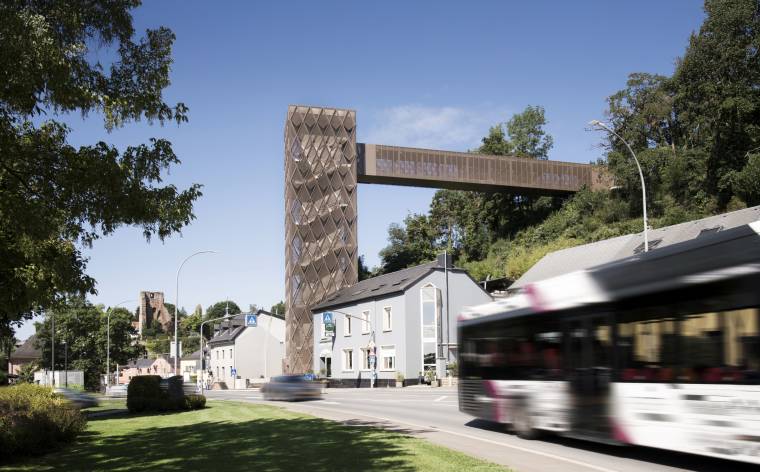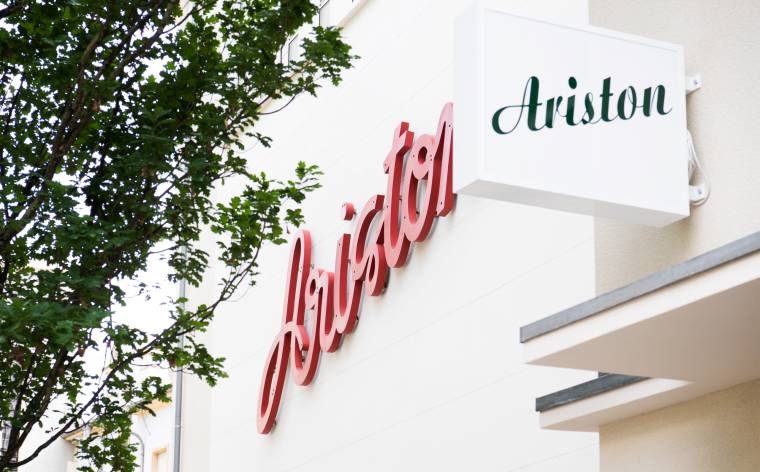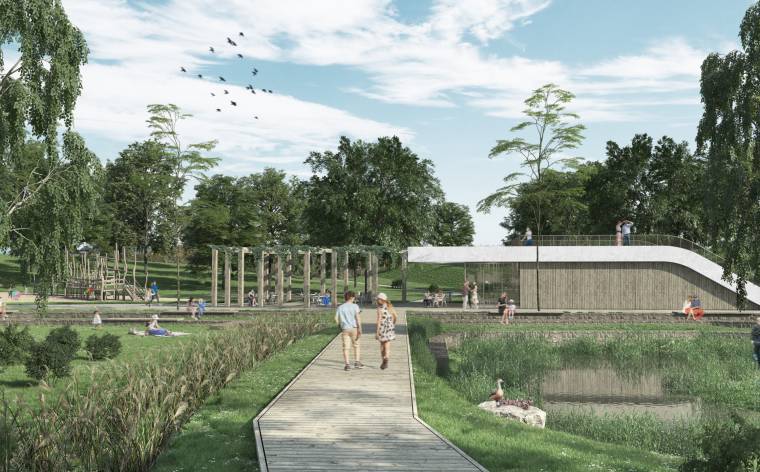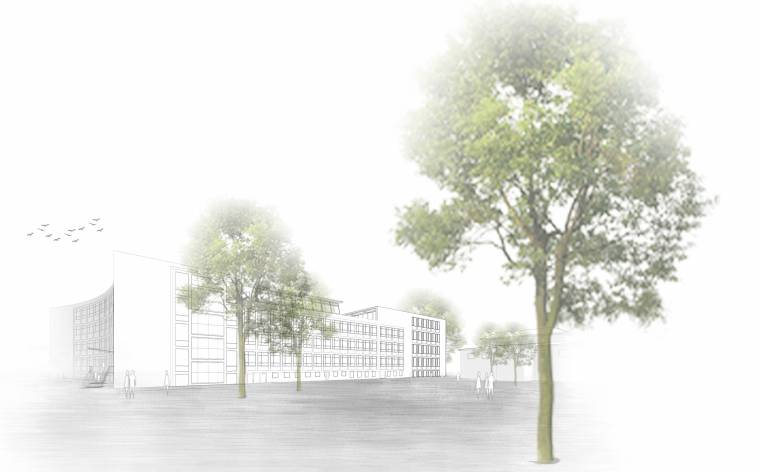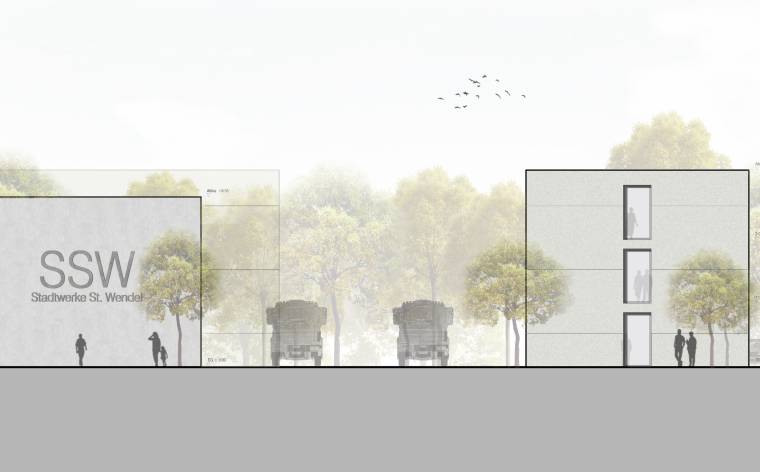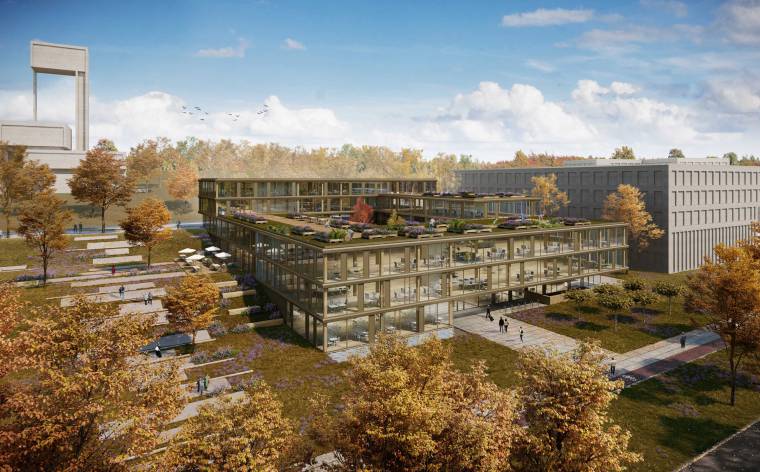Category :
Special buildings
Project :
Fire brigade building Ingelheim am Rhein
Client :
Stadt Ingelheim am Rhein
Country :
Germany
Area :
gfa 6.353 m³
Planning period :
06/2015 - 09/2015
Share on
project New construction of a fire station in Ingelheim am Rhein awarding authority City Ingelheim am Rhein (GER) team WW+, Esch-sur-Alzette/Trier (LUX/GER) rendering Stube 13, Zürich (CH) gfa 6.353 m² ufa 5.074 m² gv 35.228 m³ total area 14,5 ha net construction costs 6.210.868 € total gross costs 7.390.932 € competition phase 06/2015 - 09/2015 restricted competition participation
“Good architecture lives off tension, harmony and appropriate modesty. It should radiate a breath of implicitness and always be guided by the essence of man.”
Norman Heibrodt
The unique geography of the building site and its functional and unmistakeable use characterise the overall sculptural and typological structure of the planned fire station. The architectural concept and the staging of the individual functional units all systematically descend from the existing natural environment and the building’s use.
Design concept
The distinctiveness of the site within the industrial zone of Schaafau on the outskirts of the city of Ingelheim, featuring a flat yet relatively open structure that joins all sides of the building site, provides only limited urban planning specification. The architectonic concept foresees a compact building form, in a bid to reduce the built-up surfaces and places particular importance on a harmonious integration into the surrounding environment. With its distinctive form, the building blends into the existing development, its distinctive volume creating a visible landmark. The result is a design that provides its users with a clearly defined structure and short distances in the event of an emergency. At the same time, the architectonic concept achieves openness and transparency through the targeted use of materials, light and openings.
Access
The main entrance is defined by a glass display cabinet on the building’s eastern side, showcasing historical equipment from the Ingelheim fire service. From there, the ground-floor operations centre is reached, which given its representative character becomes the central meeting point of the fire station and at the same time represents an important intersection, from which all the other parts of the building can be reached. To encourage synergies between the individual building parts, access to the upper floor is foreseen via a stairwell with lift. The internal area of the Ingelheim fire brigade featuring educational rooms, a training area, a kitchen for long-term operations, rest areas, a standby room and administrative area, as well as the training area for the youth fire brigade connect directly to the stairwell. The public fitness and exercise room is also accessed from here.
The existing access from Straße Am Großmarkt allows motorised traffic to directly approach the newly planned parking area, which borders the east of the building design. To ensure short distances in the event of an emergency, 20 parking places with direct access to the fire station have been allocated for the volunteer fire brigade. The emergency exit is also planned alongside the vehicle entry and exit area. Further access, as well as an exit for passenger and emergency vehicles, is ensured via Max-Planck- Straße. Direct access to the building yard is foreseen towards the rear of the fire station site.
Functional solution
The design of the fire station as a one-storey and in part two-storey building automatically creates individual main function areas. The building’s two-storey head consists of a ground floor featuring the operations centre including a briefing room and reception area, which monitors the access control, as well as the locker rooms and sanitary facilities. Adjoining this are the auxiliary rooms, which include the control centre technology area, a first aid room, locker room and a storage area for the youth fire brigade. Further areas of internal use, such as the standby room with kitchenette, rest areas and the administrative area are located alongside the educational and training module on the upper floor and connected to the ground floor via a staircase and a lift. A further main function housed in the one-storey building part, in addition to the operations centre, is the very heart of the fire station, namely the engine room with adjoining workrooms, the respiratory protection workshop and uniform store, as well as the hose maintenance area, connected to the exercise tower for the purpose of drying the hoses, the supplies hall and a washing bay, accessible via the central courtyard. It is also bordered by six parking spaces leased by Mainz-Bingen district for its disaster protection emergency vehicles. In addition to providing various entrances to the building’s main modules, this space with a corresponding exercise tower serves as a fire brigade exercise area.
The individual rooms are supplied with daylight via large-scale windows boasting outside views and via skylights, resulting in a bright and friendly atmosphere in all the rooms. The educational and training area, which also looks out onto the emergency forecourt via generous windows, can also be used separately outside regular opening hours and as such forms an important focal point for the members of the fire brigade and interested parties. The result is a functional network between the fire station and the quarters in close proximity.
Construction and materials
The load-bearing components of the fire station are made of reinforced concrete. These reinforced concrete walls and reinforced concrete pillars are the support of the frame transom. The ceilings with normal wingspan are also made of reinforced concrete. The foundation of the building consists of a bedded floor slab with integrated strip foundations and an ice wall. The massive concrete cubature featuring mineral wool thermal insulation is clad with an anthracite-coloured Alucobond panel in the form of a curtain-wall and rear-ventilated wooden strip facing. The interior is characterised by a scaling down to just a few materials. Overall, the harder materials of glass/profiled glass, concrete and brightly plastered walls dominate. In the heavily frequented areas, wall claddings, such as laminated panels for instance, ensure longevity. Their different colour schemes define the various use areas while also serving as a visual guidance system for an improved orientation within the building. The common areas, i.e. the spaces that see increased use both inside and outside, also feature wood as a soft element, which produces a friendly and warm work and social environment. In keeping with the comprehensive energy concept, robust, durable and sustainable materials have consciously been chosen, given that they are easy to care for and maintain their appearance over a long period of time.
Contact us !
